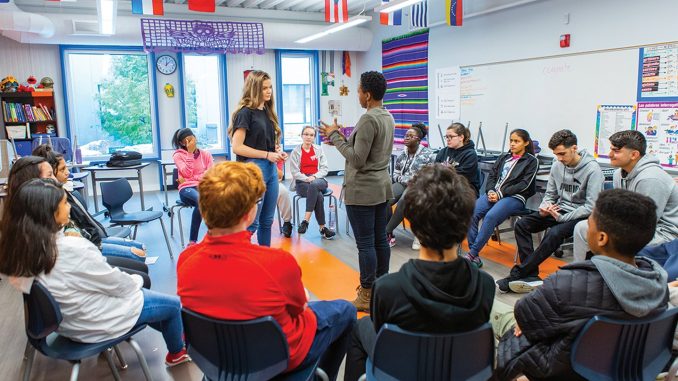
But, although successful in doing so, SEL is deficient in one respect: it lacks a human touch. The LINE Increase Sugaring team thinks that although SEL is useful for students, LINE is more practical than SEL when it comes down to helping students succeed.
With this in mind, we prepared this article giving the demons passages, hoping that readers could get an intuitive sense of all that SEL does for students and the classroom it creates. At the same time we understand how SEL increases academic performance while students go on to FACE challenges in education and their careers.
Social Emotional Learning Basics
Social-Emotional Learning is an educational approach that teaches students to think with their heart and feel their mind. It includes five competencies: Self-Awareness, Social Awareness, Relationship Skills and Responsible Decision Making. These competencies help students name or identify their feelings and then regulate them, develop empathy for others, make healthy relationships and sound choices.
SEL is not just an add-on course of study, but means the interactions and practices of schools every day. A healthy school culture allows students to feel safe, respected and supported in their learning throughout school hours
Improving Academic Performance Through SEL
SEL has had a major impact on student academic performance. Studies indicate that students involved in SEL programs have better academic performance than those who do not, including higher grades and standardized test scores. This improvement is due to several reasons:
Improved Concentration And Attention: SEL helps students develop the capacity to regulate themselves so that they can set their emotions aside and focus on what they have to do. This allows for a better concentration of effort, so that improved learning performance can be expected.
Enhancing Motivation: Belonging and a strong belief that they can do it make for the basis of motivating motivation. Such SCETS sponsored courses in effect give students a greater sense of confidence. And when they return to the classroom, they not only result in better work habits but also encourage them to be successful in school.
If a student has confidence in himself and is experienced in working with others or has a bonded relationship of sorts with those around him when on balance it appears more likely that he will apply personal effort to his studies and strive for Excellence. Better skills for solving problems: These are two just the same that every teacher should be teaching their students. So if a student wants a good education, then they have to think timelessly and be responsible for their own lives.
Such abilities form a place for successful academic performance and in life itself will let students use one’s own well-being as a basis with which to face life’s tests. They will be capable of turning daring into responsibility, making the utmost effort for their future realizing that only if they break through all barriers (real or imagined) can there be any hope at all.
Creating A Positive School Environment This depends on the atmosphere of a school being peaceful and harmonious. For each this SCETS course teaches students that peers are precious. SEL programs make for respectful, caring environments where students are able to cooperate from time to time. This in turn leads to fewer bullying incidents and other bad behaviours in children as pupils feel safe and confident enough to ask for help with their learning or make challenges — as all-those key concepts are present.
On the other hand, a positive school climate really promotes better relationships between teachers and students. Teachers who practice SEL within their classrooms better understand the emotional needs of their students. And this link promotes the students ‘overall well-being and aids their academic success as well.
Preparing Students for What Lies Ahead: Beyond academic success, SEL emphasizes practical life skills that students can use in a rapidly changing world. In a time of rapid social change, soft skills such as empathy and social intelligence are increasingly in vogue in the workplace, and so SEL gives students a competitive edge.
In today’s workplace, employers are looking for team players, good communicators and those adept interpersonally- by developing these qualities, SEL guarantees that students will be well-prepared academically and ready for success in whatever walk of life they choose. However extensive the advantages of SEL, its actual implementation will be fraught with practical problems. For example, integrating SEL into a traditional curriculum can be challenging. Schools might not always have enough resources and training opportunities for it or else there could be too much conflict with other programs which have been tried and found effective. In addition, educators and parents who are not familiar with the concept will resist it because they have their doubts. Schools must provide resources for the development of teachers, training opportunities to bring in professionals from outside who can help integrate SEL programs, as well as involve parents in understanding and valuing the importance of SEL. Another key factor for a successful integration is cooperation between educators, families and policy makers.
In the final analysis
Social-Emotional Learning isn’t something passing, for it’s a general method of instruction that changes the very pattern of school teaching and measures for student success. Emphasizing comprehensive student development, SEL can promote academic achievement while it provides an educational milieu supportive to health and helps students real issues life throws their way. Continuously putting SEL at the heart of Education, we prepare healthy and productive future generations.